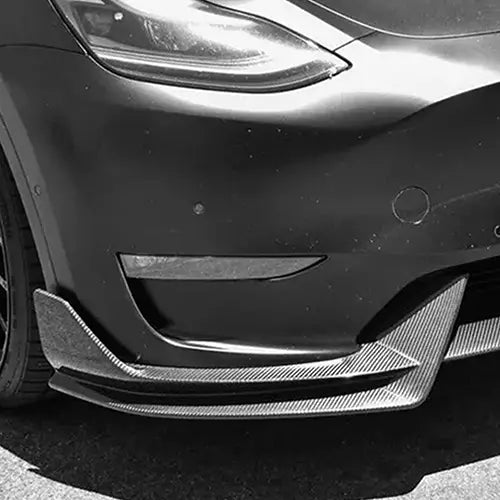
Do Side Skirts Reduce Drag? A Real Look at What They Actually Do
If you've ever looked at a car with low, clean lines running along the sides and thought, "That looks fast," you're not wrong. But those sleek panels, called side skirts, aren't just for looks. They serve a real purpose in how your car cuts through the air. Whether you're chasing better fuel efficiency, improved handling, or just want your ride to feel more stable at highway speeds, understanding how side skirts affect aerodynamics and drag could make all the difference.
What Are Side Skirts and Why They Matter for Aerodynamics
Side skirts are panels installed along the lower sides of a car, typically between the front and rear wheels. Most people think of them as a visual upgrade, but they're way more than that. They're actually part of a car's aerodynamic setup, designed to help manage how air flows under the car. That airflow is a big deal because it affects how much drag the vehicle creates while moving.
Air hitting the underside of the car can swirl and cause turbulence, which leads to more drag. Side skirts limit the amount of air that rushes underneath, cutting down on that turbulence and keeping the air flowing in a smoother, more directed path. That’s how they help reduce drag.
How Side Skirts Actually Reduce Drag
Without side skirts, air slips in from the sides and hits parts like the exhaust, suspension, and the uneven chassis. That creates pressure differences and turbulence, which basically fights against the car moving forward. The result? More drag, more fuel consumption, and slower speeds.
When you add side skirts, they act like walls that keep high-pressure air from the sides from getting underneath. This creates a kind of seal along the sides that forces the air to flow around the car, not under it. That way, the low-pressure area beneath the car stays cleaner and more stable. This setup reduces lift too, so you also get better grip and stability, especially at higher speeds.
In short, side skirts lower drag by controlling and narrowing the path that air can take around the car’s body, especially underneath.
Performance and Fuel Efficiency
In racing, side skirts have been used for decades. You’ll see them on everything from Formula 1 cars to Le Mans prototypes. These cars rely on every possible edge to reduce drag and increase downforce. In that world, even a small drop in drag can translate to higher top speeds and better lap times.
On street cars, the results can vary. You're not going to gain 20 mph in top speed just by bolting on some side skirts. But the difference can still be felt. With properly designed skirts — not just cosmetic ones — you can expect better fuel efficiency on highways and improved stability at speed, especially on open roads or when passing trucks. If your car already has other aero components like a front splitter or a rear diffuser, side skirts can help tie it all together into a more balanced setup.
Materials and Design Matter
Not all side skirts are created equal. Some are just for looks, and others are engineered to change how air flows around the car. The best ones are made from lightweight and rigid materials like carbon fiber, ABS plastic, or fiberglass. They’re shaped to hug the lower edge of the car tightly and follow the contour of the body. The tighter the fit and the smoother the shape, the better they work.
Some skirts also include little flaps or vortex generators that guide air in a specific direction. These can add more aerodynamic benefits, especially on modified or track-focused vehicles. But if a skirt is too bulky or mounted poorly, it can actually hurt airflow and increase drag instead.
Do Side Skirts Help Everyday Drivers
If you're driving a regular sedan or crossover, you might be wondering if it's even worth it. The answer depends on your goals. If you're chasing every last drop of MPG or you want your car to feel more planted at speed, high-quality side skirts can help. If your daily route involves highway driving, even a small gain in efficiency can add up over time. For weekend track warriors or tuners, the benefits are clearer: more stability, better cornering, and a more aggressive aero package.
Just don’t expect miracles from cheap stick-on pieces. If you want results, go for skirts that have been tested or wind-tunnel validated. Look for those that integrate well with your car’s existing aerodynamics. Bad fitment or poor design can mess with airflow and give you the opposite of what you’re looking for.
Conclusion
So, do side skirts reduce drag? Yes — when they’re built and installed right, they absolutely do. They streamline the airflow under and around your car, lowering turbulence, reducing lift, and improving overall efficiency. They’ve been proven in motorsports, and their benefits can carry over to everyday vehicles too. While the gains might not be massive for everyone, the combination of better fuel economy, stability, and aerodynamic balance makes them a smart upgrade for drivers who care about performance and efficiency.
FAQs
Do side skirts increase top speed?
A little. By reducing drag, they help the car move through air more easily, which can slightly increase top speed — especially when combined with other aero parts.
Are side skirts only for sports cars?
No. While they’re common on performance cars, side skirts can also help with fuel economy and highway stability on regular vehicles if properly designed.
Can side skirts be installed at home?
Yes, many come with bolt-on or adhesive options, but for best results and alignment, a professional install is recommended.
